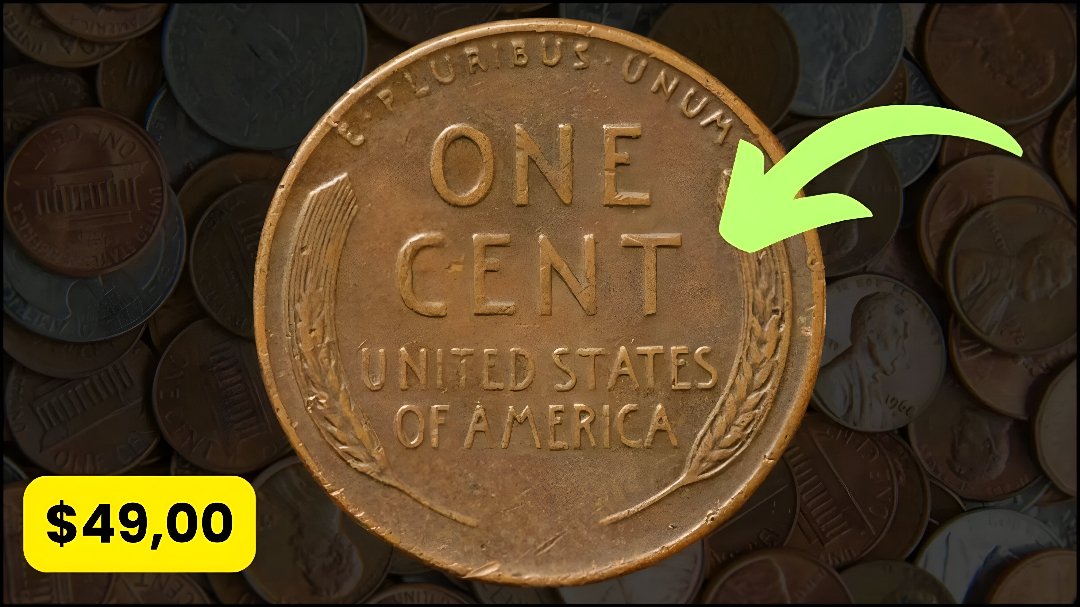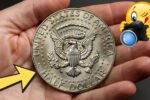The Lincoln Wheat Penny Valued : For coin collectors, the Lincoln Wheat Penny is one of the most iconic pieces of U.S. currency. First introduced in 1909 to commemorate Abraham Lincoln’s 100th birthday, these pennies featured a wheat stalk design on the reverse and became a staple in American wallets for decades. But among the millions produced, certain rare Lincoln Wheat Pennies have skyrocketed in value — in some cases reaching $49,000 or more. So, is this valuable penny still in circulation, and how can you spot it?
Check the Money in Your Pocket: How to Identify a 1995 $5 Bill With an Upside-Down Seal
What Makes a Lincoln Wheat Penny So Valuable?
While most Lincoln Wheat Pennies are worth only a few cents, rarity and condition drive their value. A penny can fetch tens of thousands of dollars due to factors like:
- Key Dates and Mint Marks: Certain years, like the 1909-S VDB or 1914-D, had low mintages, making them highly sought after by collectors.
- Errors and Misprints: Coins with doubled dies, repunched mint marks, or off-center strikes are rarer and more valuable.
- Condition (Grade): Coins in uncirculated or near-mint condition, with minimal wear and clear details, command much higher prices than worn coins.
A particularly notable example is the 1943 copper Lincoln Wheat Penny, an accidental release during World War II when pennies were supposed to be made of zinc-coated steel. This rare copper version can fetch up to $49,000 or more depending on its condition.
Lincoln Wheat Pennies and their key collectible details
| Year / Mint | Type / Feature | Key Identification | Estimated Value |
|---|---|---|---|
| 1909-S VDB | Key Date | “VDB” initials on reverse, San Francisco mint | $1,000 – $25,000+ |
| 1914-D | Key Date | Denver mint, low mintage | $500 – $10,000+ |
| 1922 No D | Key Date / Error | Missing Denver mint mark | $3,000 – $25,000+ |
| 1943 Copper | Rare Error / WWII | Copper instead of zinc-coated steel | $30,000 – $49,000+ |
| 1944 Steel | Error | Struck on leftover steel planchets | $50 – $500+ |
| Doubled Die Varieties | Error | Letters or numbers appear doubled | $100 – $5,000+ |
| Off-Center Strikes | Error | Design shifted from center | $50 – $1,000+ |
| Common Circulated Pennies | Standard Issue | Regular copper Wheat Penny | 5¢ – $1 |
Are These Pennies Still in Circulation?
The short answer: rare pennies like the 1943 copper version are extremely unlikely to be found in everyday circulation. Most have been removed by collectors or discovered in estates and coin collections.
However, ordinary Lincoln Wheat Pennies from the early to mid-20th century do still occasionally appear in circulation. They are usually worth only a few cents unless they are a key date or have an error.
How to Identify a High-Value Lincoln Wheat Penny
If you want to check your coins for potential value, here are some tips:
- Check the Year and Mint Mark
- Look at the bottom of the coin under the date for the mint mark (D for Denver, S for San Francisco, no mark for Philadelphia).
- Key dates like 1909-S VDB, 1914-D, 1922 “No D,” and the 1943 copper penny are especially valuable.
- Inspect the Metal
- Most 1943 pennies are steel coated with zinc and appear silver-colored.
- Copper-colored 1943 pennies are extremely rare and valuable.
- Look for Errors
- Doubled dies, repunched mint marks, off-center strikes, and other unusual features can significantly increase value.
- Condition Matters
- Coins without scratches, wear, or corrosion will have higher collector value.
Should You Check Your Change?
Absolutely. While it’s unlikely you’ll find a $49,000 penny in your pocket, many collectors have discovered thousands of dollars’ worth of coins just by inspecting loose change, old coin rolls, or coins stored in jars for decades. Even a common key-date Lincoln Wheat Penny can fetch hundreds or thousands of dollars in the right condition.
Final Thoughts
The Lincoln Wheat Penny is more than just pocket change; it’s a piece of American history. While the rarest coins, like the 1943 copper penny, are unlikely to be found in circulation, every coin has the potential to surprise you. So next time you dig through your change, take a moment to check those pennies — you might be holding a piece of numismatic gold.
FAQs: Lincoln Wheat Penny
Q1. Which Lincoln Wheat Penny is worth $49,000?
The 1943 copper Lincoln Wheat Penny is extremely rare. Most 1943 pennies were made from zinc-coated steel due to WWII copper shortages. The accidental copper versions can sell for up to $49,000 depending on condition.
Q2. How can I identify a valuable Lincoln Wheat Penny?
-
Check the Year and Mint Mark: Key dates include 1909-S VDB, 1914-D, 1922 No D, and 1943 copper.
-
Inspect the Metal: 1943 pennies should be silver-colored; copper ones are rare.
-
Look for Errors: Doubled dies, off-center strikes, and repunched mint marks add value.
-
Condition: Coins in uncirculated or near-mint condition are worth more.
Q3. Are these high-value pennies still in circulation?
Most rare pennies have been removed from circulation by collectors, though ordinary Wheat Pennies from the early 1900s may still appear. Finding a $49,000 penny in circulation is extremely unlikely.
Q4. Can I spend a rare Lincoln Wheat Penny?
Yes, legally it is worth 1 cent, but doing so would waste a coin that could be worth thousands to collectors.





